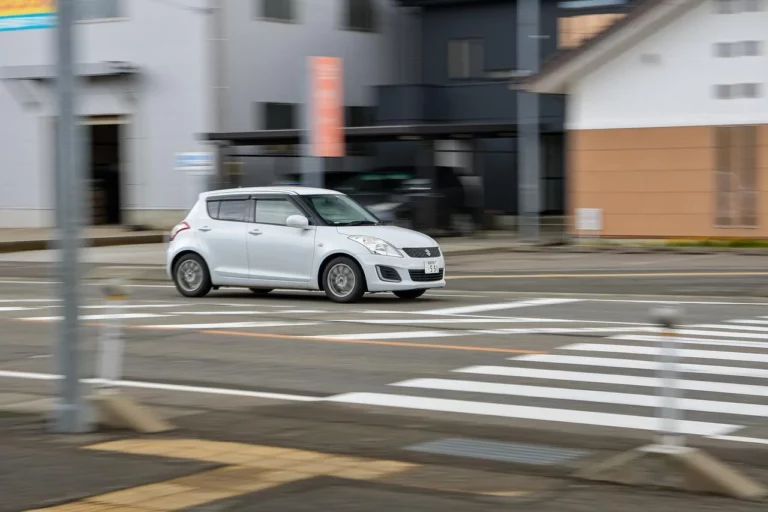Pedestrian Accident Lawyer Boynton Beach

Pedestrians are especially vulnerable when drivers fail to pay attention or follow traffic laws. If you’ve been hit by a vehicle while walking in Boynton Beach, Weston & Pape is ready to stand by your side. A pedestrian accident lawyer from our team can help you pursue accountability and financial recovery for your injuries. Reach out at 561-821-3898 to schedule a free consultation and discuss your legal options.
How Florida’s Crosswalk Laws Impact Pedestrian Accident Claims
Pedestrian accidents can happen quickly and often leave victims with serious injuries. In busy areas like Boynton Beach, crosswalks are meant to provide a safer way for people to navigate roads and intersections. But even with these safety measures, accidents still occur. When a crash happens, the details of how and where it took place can influence who is held responsible.
Understanding how Florida’s crosswalk laws apply is a key part of any pedestrian accident claim. These laws help determine fault and influence whether a pedestrian may be entitled to compensation for their injuries. If you or someone you know was hit by a vehicle while crossing the street, it’s important to know how these laws can affect the outcome of the case.
How Florida law defines a crosswalk
Under Florida law, a crosswalk is not just the painted lines most people recognize at intersections. A crosswalk can be marked or unmarked. Marked crosswalks are usually outlined with white lines and sometimes feature signage. Unmarked crosswalks are legally present at most intersections, even if there are no visible lines. Drivers are still expected to yield to pedestrians at these locations.
This distinction becomes important when determining whether a driver failed to yield the right of way. If a pedestrian was crossing within a legal crosswalk—marked or unmarked—the driver likely had a duty to stop or slow down.
When drivers are required to yield
Florida Statute 316.130 outlines specific rules about pedestrian rights. When a pedestrian is in a marked crosswalk with a “Walk” signal or traffic control device, drivers must stop and allow them to cross safely. Even at crosswalks without signals, drivers are expected to yield when pedestrians are present on the half of the roadway the vehicle is traveling, or approaching closely enough from the other side.
If a driver fails to yield in these situations and causes a collision, they can be held liable. However, pedestrian behavior also matters. The law does not give pedestrians the right to step out suddenly into traffic and expect vehicles to stop instantly.
Pedestrian responsibilities under state law
Just as drivers have duties, pedestrians must follow rules as well. Florida law requires pedestrians to obey traffic signals and only cross at designated crosswalks when available. Pedestrians should not walk into the path of oncoming vehicles that are too close to stop in time.
If a pedestrian was distracted, jaywalking, or crossing outside a legal area when an accident happened, they may be considered partially at fault. This doesn’t necessarily prevent them from recovering compensation, but it could reduce the amount they’re eligible to receive.
How comparative fault impacts pedestrian claims
Florida follows a modified comparative fault system. This means that each party’s share of fault is considered when determining compensation. If a pedestrian is found to be partially responsible for the crash—say 20%—their compensation would be reduced by that percentage. If they are found to be more than 50% at fault, they may not be able to recover damages at all.
This is one reason why crosswalk laws are so important in pedestrian accident claims. Proving that the pedestrian was lawfully in the crosswalk and following traffic signals can help show that the driver was primarily at fault.
Common scenarios where crosswalk laws matter
Crosswalk rules come into play in several situations:
- Marked crosswalk with signals: If a pedestrian crosses during a “Walk” signal and is hit, the driver is typically at fault for not yielding.
- Marked crosswalk without signals: Drivers must yield if the pedestrian is within or approaching their half of the road.
- Unmarked crosswalk at an intersection: These are still legally protected areas, and drivers are expected to yield to pedestrians.
- Crossing mid-block or outside a crosswalk: Pedestrians must yield to vehicles. If an accident occurs, the pedestrian may be found partially or fully at fault.
Every case is different, and the specific details will influence how fault is assigned. That’s why documentation and witness statements are often key in pedestrian accident claims.
Why early legal help matters
Pedestrian accident cases can be more complicated than they appear. Even when it seems clear that a driver failed to yield, insurance companies may try to shift blame to the injured pedestrian. They may argue that the pedestrian crossed illegally or was distracted at the time of the crash.
An experienced personal injury attorney can help gather the right evidence, such as traffic camera footage, witness accounts, police reports, and medical records. They can also review whether the crosswalk was properly marked and maintained, which can be a factor if the city or property owner shares some responsibility.
In Boynton Beach, areas with high foot traffic—like shopping centers, beachside roads, and school zones—can present additional challenges. If traffic signals or crosswalk markings are unclear or poorly maintained, that may affect liability as well.
The Role of Police Reports and Scene Evidence
Police reports are often one of the first documents reviewed after an accident. Officers will typically note whether the pedestrian was in a crosswalk, what traffic conditions were like, and whether any party appeared to violate traffic laws. These details can support your claim or point to additional witnesses and sources of evidence.
Photos from the scene are also helpful. If the crosswalk was clearly marked and the pedestrian was hit while within it, those images can be powerful. If signage was missing or blocked, that could shift some responsibility to other parties, like a property owner or municipality.
Time limits for filing a pedestrian injury claim
In Florida, the statute of limitations for personal injury cases is generally two years from the date of the accident. Missing this deadline can mean losing your right to compensation entirely. It’s important to act quickly, especially since evidence can fade and witness memories may become less reliable over time.
A Personal Injury Attorney Can Help After a Pedestrian Accident
Pedestrian accidents often lead to life-altering injuries and costly medical care. If a negligent driver caused your injuries, you shouldn’t have to carry the burden alone. A personal injury attorney at Weston & Pape can help you navigate your case and hold the at-fault party accountable. Contact our Boynton Beach office at 561-821-3898 to schedule a free consultation and learn how we can help you move forward.

 Call Us Today - It's Free
Call Us Today - It's Free